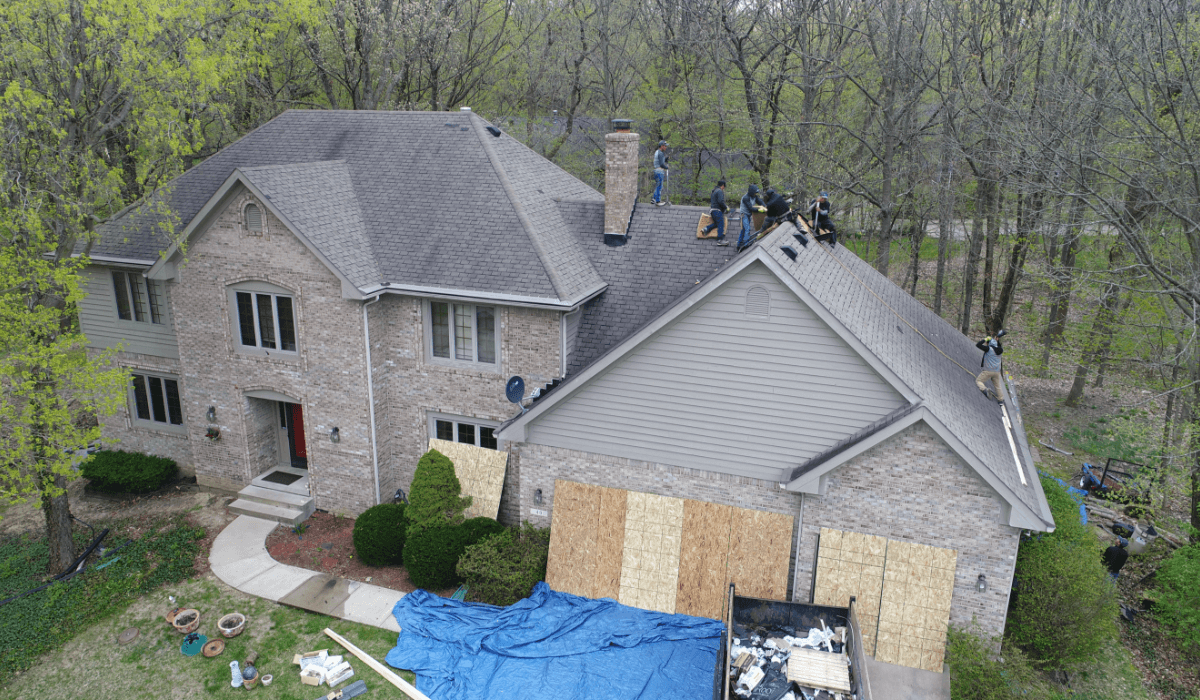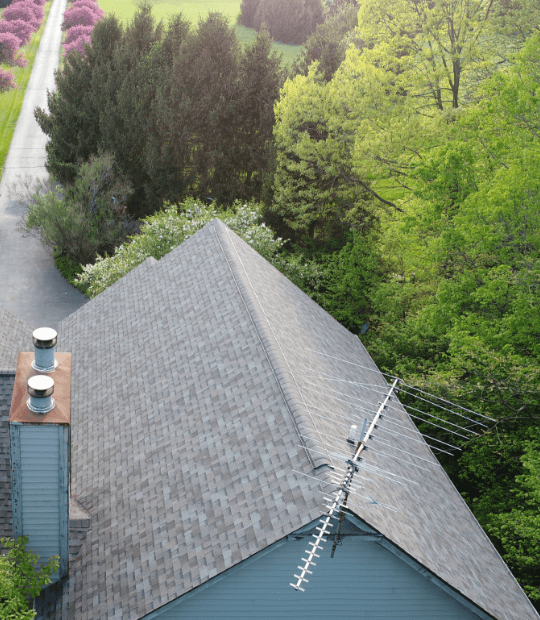What is Ponding?
Ponding is the accumulation of water on a flat roof. Ponding water can be caused by environmental factors, such as rain or snow, and is often associated with a lack of proper ventilation that can cause moisture to build up in the roofing system or within the ceiling.
If Ponding is caused by a lack of ventilation and poor roof integrity, you should check your roof for holes or other damage. Next, if you have a flat roof, you need to consider using eave vents.
It will help equalize the pressure between the roof and the outside atmosphere. Creating a positive pressure will prevent water from pooling on the roof surface.
Ponding happens because the air on the flat roof is typically more relaxed than the air surrounding it, causing convection. Air rises into the ceiling, where it cools and sinks.
Doesn't the Roof System Already Prevent Water From Coming In?
Often, the roof system, such as tarps and shingles, prevents water from coming in. However, this is not ideal because the flat roof is not ventilated to allow for thermal movement. It would help if you looked into using eave vents to create positive pressure in your flat roof space.
When Should I Expect to See Ponding?
You should see a lot of or constant dripping from the roof surface. A continuous flow of water on the roof surface signifies problems with your roof and ventilation.
You need to look into this issue because it can damage your flat roof and cause slippage in your shingles. The size and frequency of leaks will determine just how much leakage you have.
What Should I Look For Next?
You need to identify the cause of your Ponding. Sometimes Ponding is caused by a leaky flat roof, so you'll need to check the integrity of your shingles and roof system.
However, many times we find that there is damage occurring in the ceiling. It is typically linked to leaks from the roof's seam sealant or other components that allow water to enter the attic space.
If you notice your roof draped with water, you should start looking at all of your vents. If left unchecked, this could be a significant problem for your house and cause additional damage to your ceiling.
What Is the Best Way to Stop the Leak?
You need to clean and replace your ceiling insulation. If you notice that your ceiling is damp, you should look into replacing your eave vents as soon as possible.
You'll want to get a professional at Wilkinson Builders for this task, as we have highly trained installers who can perform this task quickly and efficiently.
Using eave vents is the best way to stop ponding water on your flat roof. It will help equalize the pressure between your roof and the outside atmosphere.
Creating a positive pressure will prevent water from pooling on the roof surface. Remember that it's essential to check all of your vents regularly, as they could cause water ponding in the first place.
Why Does Ponding Happen?
1. Improper Installation
One of the most common reasons for having water pooling on your roof is improper installation. Shingles installed in the wrong way or not at all are a significant contributor to ponding issues.
If you're still experiencing problems after consulting with a professional and repairing any shingle installation mistakes, other underlying problems may need to be addressed.
2. Leaking Roof Members
Another common cause of Ponding is leaking roof members. Although very frustrating and time-consuming to repair, you can quickly fix this problem by replacing the shingle section that is leaking. It is a relatively simple repair that takes between 1-3 hours, depending on your home's size.
3. Compresses Insulation
A third common cause of Ponding is having it improperly installed Insulation. A common mistake homeowners make when installing Insulation is not following the manufacturer's instructions, which often results in a more insulating product being applied to areas that don't require it.
4. Attic Venting
Many homes have attic vents that do not function properly. Another reason for this is a malfunctioning thermostat and vent controls or even no thermostat, to begin with.
Other common causes of attic venting failure are that the units are too small or not seated correctly, and the attic is not sealed properly. When these issues occur, air leaks can easily invade your home through the vents, resulting in significant problems with mold and other moisture problems.
5. Improperly Sealed or Leaking Valleys
A significant contributor to this ponding problem is improper ventilation of your roof valleys. Many homes have poorly insulated valleys that don't provide adequate ventilation.
6. Other Possible Causes
Finally, possible other reasons for the ponding problem include soil conditions around your home, vegetation that holds moisture against your house, and failure to clean gutters after a heavy rain storm.
All of the maintenance issues that may result in Ponding can quickly be solved by hiring a local contractor experienced in mitigating the problem.
The Importance of Getting Professional Help with Ponding
Ponding is an issue that many homeowners experience, but it can be incredibly frustrating when you can't get rid of liquid water on your roof.
Suppose your flat roof has issues, such as significant rainfall or leaks. In that case, you may need to consider professional help from a professional roofing company like Wilkinson Roofing.



